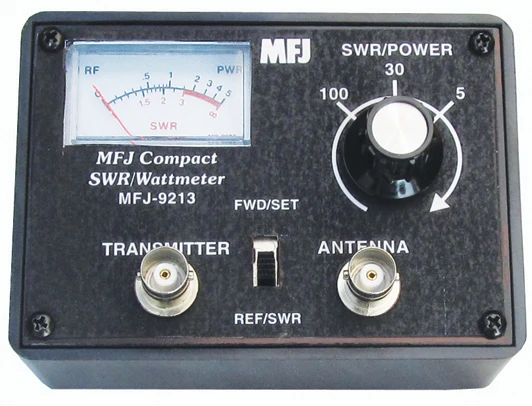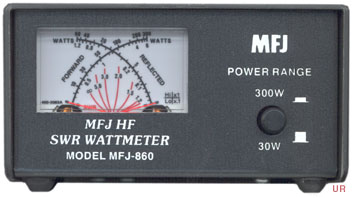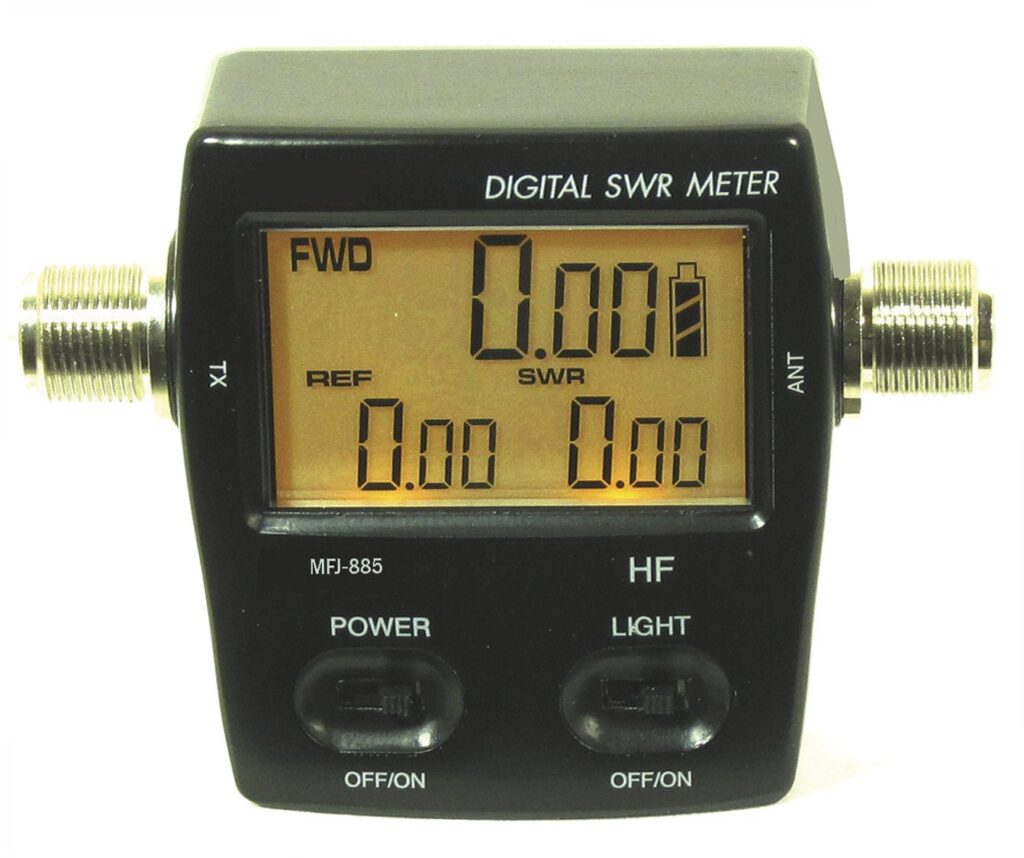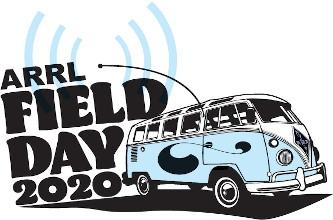We clocked 237 volunteer hours during the month of June, and we’re currently standing great with 108 active members!
Our June 25 ARES meeting will be online using Webex. Nate NA7EE will be talking about field stations. We hope you will join at 7:00PM. A link will be sent prior to the meeting, so watch your email.
The May and June Winlink drills from home were a great success. We appreciate our members who have participated and honed their skills. Remember to open your Winlink application every month to get the latest updates. Mark Saturday, July 18 on your calendars for the mobile ARES exercise. This should be a fun one and will get you out of the house and traveling to various checkpoints. I think we are all ready to get out of the house for a while! Watch your email for more details.
If you want to monitor you system’s performance, a good SWR (standing wave ratio) meter is a key piece of hardware. With a quick glance at the meter, you can see how your radio, coax and antenna are working. SWR meters come in many shapes, sizes, and styles.

Direct reading meters such as the MFJ-9213 can be identified by a FWD-REF switch and a common dial with a single needle. These meters require the user to set the switch to FWD (forward power) and then push the microphone PTT button and stay in the transmit mode while adjusting the meter to the SET or CAL line on the meter. Then release the PTT button, set the meter to REF, and key the microphone again while reading the SWR value on the meter.

Dual or cross needle meters such as the MFJ-860 require no adjustment. Push the microphone PTT button and one needle will show the power output, while the second needle will show the reflected power. The place on the meter where the needles cross indicates the SWR.

Digital meters such as the MFJ-845 require no adjustments and are the easiest to use. Just push the microphone PTT button and directly read the values from the digital display.
So what does this thing tell me? It will tell me if my transmitter is putting out the correct power. It will tell me how much of that power is being reflected back to the transmitter and it will tell me how well my antenna system is matched to the frequency I am using.
One very important detail about SWR meters is that they are frequency specific. Using an HF meter to test UHF frequencies will result in bad readings. So always make sure that you are using an SWR meter that matches the frequency you are transmitting on. There are many of the old CB meters out there – but remember they were made to monitor frequencies around 27 Mhz and do not work well on other frequencies.
For the month of May, we had 272 volunteer hours. We currently have 109 active members. Also, Eric N9WJQ has rejoined the Bravo team. Welcome back, Eric!
Becoming involved in amateur radio was a surprise to me. When I retired I looked around for a volunteer activity and subsequently joined the Laurelhurst Neighborhood Emergency Team. After a couple of years a colleague suggested we get our Technician license. I thought, “why not?”
Since then it has been a two-year journey of buying equipment and becoming familiar with the technology. I have an ICOM-7100 and a Kenwood D710 in my go-kit. Recently my Elmer, Dana K6BRR, helped me install a 40M Inverted-V antenna. Future projects include working with digital modes using VARA FM and HF. I also co-host a weekly simplex net to encourage amateur radio operators to get on the air and to do propagation testing within the neighborhood.
I am retired from the Boeing Company where I spent half my career in Washington, DC and half in Seattle. I have always enjoyed working on large programs so Boeing was a good match. I worked on Department of Defense contracts and a 10-year program to re-engineer the Commercial Airplanes business processes.
I share my passion for amateur radio with a passion for travel. Some of my more interesting travel adventures have included going through Checkpoint Charlie into East Berlin in the 60s, working in Venezuela, hiking in Lapland, and studying French in Provence. I also spend time gardening, quilting, and practicing yoga and Tai Chi.
It has been a great journey into amateur radio so far – thanks to the members of the MCARES and Portland NET ARO communities who have been so generous with their time and expertise.
DO
- Listen to Net Control’s instructions and check in as instructed, giving all information asked for, and nothing else.
- Check in with your call sign phonetically. After this, you do not need to give it phonetically.
- Especially on repeaters: PTT – inhale – talk; on linked repeaters: PTT – count to three – inhale – talk.
- To eliminate doubling with someone else, listen before you talk.
- If there is a double that doesn’t involve you, wait for net control to straighten it out and acknowledge those involved in the double.
- If net control makes a mistake in acknowledging your call sign, say “correction” and then wait to be acknowledge before giving your correction.
- Be forgiving. Be patient.
- GO SLOWLY when transmitting anything the receiving station is writing down. Go even slower if asked to repeat.
- Learn and use ITU phonetics.
- Be efficient. Use pro-words and “short talk” such as: “with traffic”, “I say again”, “correction”.
- If asked to repeat something, repeat it and spell phonetically.
- If you are talking for more than two minutes, unkey the mike momentarily to let the repeater reset.
- After check-ins, if you have something to say, give your call sign and wait for net control to acknowledge you before continuing.
DON’T
- Don’t challenge net control on the air.
- Don’t try to check in before net control opens the net.
- Don’t check in early; OK to check in late if you got lost in a double or simply joined late.
- Don’t use Q codes.
- Don’t sign in and say “no traffic.” Just say “with traffic” if you do have traffic to relay.
- Don’t say “I pause,” or “I’ll let this drop”, etc. when you unkey the mike.
- Don’t follow along and break protocol if you hear others doing so.
- Don’t leave before the end of the net without signing out.
- Don’t check in again if you are not recognized immediately. Instead, wait for net control to acknowledge the next group of check-ins. If you are not recognized then, try again in the next group or at the end of check-ins when net control asks for “late or missed stations.”
I hope everyone finds themselves safe and healthy as they read this! June is almost upon us, which is normally our time to gather for field day where we share tight quarters, communally sup, and greet each other warmly. Unfortunately, epidemiological prudence demands a different tack. I am bummed, but I hope we all can make the most of the weekend of June 27 nonetheless.
Since we cannot meet in person, I am encouraging everyone to execute Field Day by operating field stations in their own backyards or physically-distanced location of their choosing. Given the number of MCARES operators, there should be contacts to be made locally even if VHF FM voice is your only operating mode. Since contacts count for points on each different band, this could also be a great excuse to expand into 6m operations if you’re interested. The sheer number of folks on the air can make the magic band seem alive for long distance contacts! In the spirit of the event, we should all strive to operate via auxiliary power (batteries or other) as well.
The gist of the operating on Field Day is a contest format with a standard exchange. Since there are usually so many stations operating, there is often great leeway granted to newer operators during Field Day. So don’t stress about the radio operations themselves; dive in and have fun. The best place to start is the ARRL’s Field Day page. A YouTube binge for Field Day videos is also a great way to start if you’re completely unfamiliar.
The rules are somewhat in-depth, so if you have questions after you review them, I encourage you to bring them to the June general membership meeting. Hopefully we can address everything at that time so everyone can operate with confidence. I hope to hear a lot of local “One-Echo-Oregon” stations on the air this Field Day!
Is your radio acting strangely? Coughing? Runny antenna? Watery display?
A quick way to check its overall health is with an amp meter. If power is going out, then your radio will be sucking power in! The amp meter is the thermometer of the radio world.

A quick review of your manual will tell you what your radio consumes when putting out full power. Most mobile radios will consume 20-22 amps. So don’t hesitate; if your radio seems sickly and you think it’s got the coronavirus, stick an amp meter in its mouth and key the mic and see if its temperature is normal. 22 amps on the meter? It’s not a virus!
If your 700 amp, klystron powered, 473 pound linear (another topic for another day!) power supply does not have a built in amp meter, you can certainly find one, like the one pictured here, on Ebay for around $10. A quick set of Anderson power pole connectors on each end and the doctor is ready to check radios!
I would like to welcome two new members: Walt KJ7BHL and Dave N7DML. Walt is on the Alpha team, and Dave is on the Charlie Team. We now have 111 active members, and we logged 173 volunteer hours in April.
Are you locked down and looking for things to do? Visit WebSDR.org and listen in on hams all over the world. With WebSDR you will be able to take control of receivers worldwide and tune in on all of the bands in all of the regions. Someone not interested in ham radio (that can’t be us!) activities? Then tune in to the European stations and brush up on your French language skills.
It’s as easy as starting up your computer and going to www.websdr.org.
- Scroll down the main page and you will see ham stations from all over the world.
- Pick a region
- Pick a station
- Pick the band you would like to listen to

It’s that easy! You’re in control. Scan the waterfall (now you know what that purple thing up there is called!) and pick out the strong stations as they will be the brighter vertical lines. You can also try the weaker stations as shown by the faint lines. Or maybe the whole band is quiet with no lines at all – just change bands and keep going! Hear something rare or exotic? Create a log on your favorite SDR site and log in your treasure.
Want to practice your CW? Tune down to the low end of the 40CW band and find a station; they are always there! Want to practice more later? Then just start the audio recording and play it back at another time.
So, while locked in, stay out of the cookie jar and junk food, and go play in SDR land!
